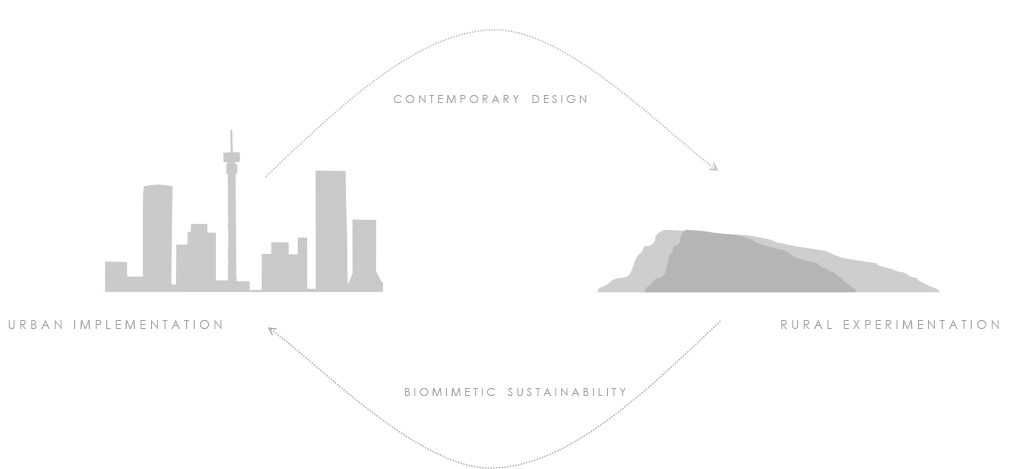APPROACH
AFRICA
Over the next 20 years, the continent will host one of the fastest and largest growing city regions in the world. Africa is also uniquely one of only two places in the world that still possesses its mega fauna along with their major predators.
With climate change predicted to add additional strain to the relationship between wildlife and people, a group of architects and engineers ask what role does space play in this global challenge?
We live in a time of incredible change. If we don’t increase the client base of cities to include endangered wildlife, we will be the cause of the next mass extinction event; the difficult question to answer is how do we start to change this?
“This is the question I have decided to dedicate my life to answering” Marc Sherratt
Marc Sherratt, founder of Marc Sherratt, Sustainability Architects is a professional architect (PrArch) registered as such with the South African Council for the Architectural Profession (SACAP).
Marc qualified with his Masters at the University of Johannesburg, in South Africa, where he still lectures periodically. His distinction dissertation focused on questioning architecture’s role in nature conservation in the design of a city-based breeding aviary for the endangered Cape Vulture. His portfolio of work has gained him unconditional acceptance into one of the top universities in the world, University College London.
Instead of pursuing further academic studies, Marc started MSSA instead – his team consists of highly qualified architects and engineers passionate about bringing contemporary development with an environmental conscience. Social economic development is the priority one of most African governments and it should be. What we do is balance the conversation with ecological sensitivity. The cost of any development must always be balanced with a long term environmental equation.
MSSA’s projects range from vulture aviaries on mountain ranges to ocean cooling rings to elephant migration routes that run through cities. Their experience in large-scale civic buildings equips them to tackle all building, context and scale types. It is their research and sustainability approach that makes them unique. Their website offers opportunities for anyone wanting to invest in sustainable property development in Africa as well a place where selected clients can retain them to produce contemporary architecture at the highest sustainability standards.
“Working in Africa is tremendously exciting. I have travelled the world and have yet to find a place of such cultural dependence and interrogation of the natural environment. But to work here you must be on the ground, in the language and looking deep into people’s faces to ever produce something meaningful. The Zulu’s say Sawubona, a greeting that means I see you, I recognize your presence but more than that you and I are connected, we thrive best together. That type of relational connection is what I want to strengthen between people and their natural environment.” Marc Sherratt
“THE ARCHITECT IS THE TRANSLATOR OF NATURE”
RENZO PIANO
“NOW THIS IS THE FUTURE OF SOUTH AFRICAN ARCHITECTURE”
RENOWN ARCHITECT ANDREW MAKIN COMMENTS ON MARC SHERRATT’S DISSERTATION

B L A C K B A R K G A M E L O D G E
M A G A L I E S B E R G

“MOBILE FIELD STUDIO OPERATING IN MAGALIESBERG”
